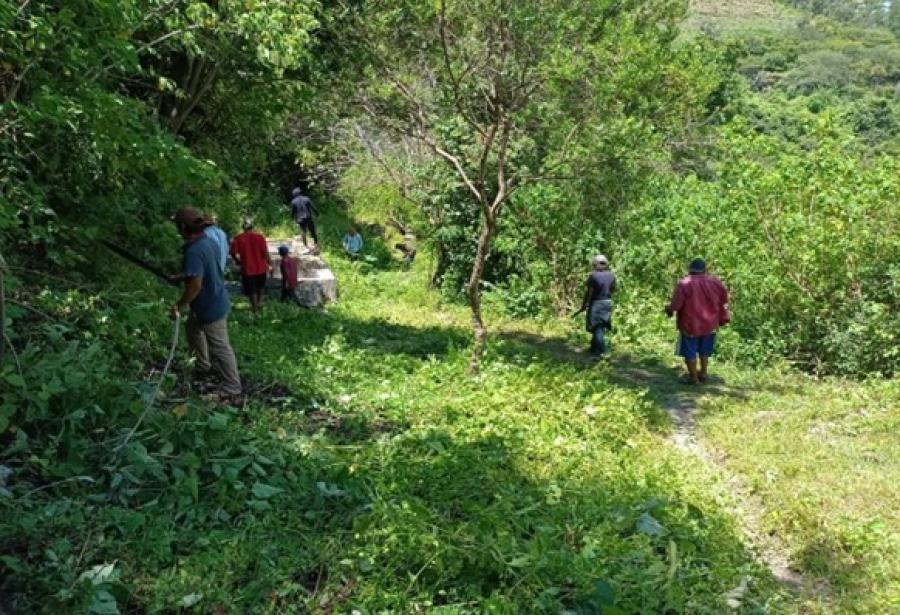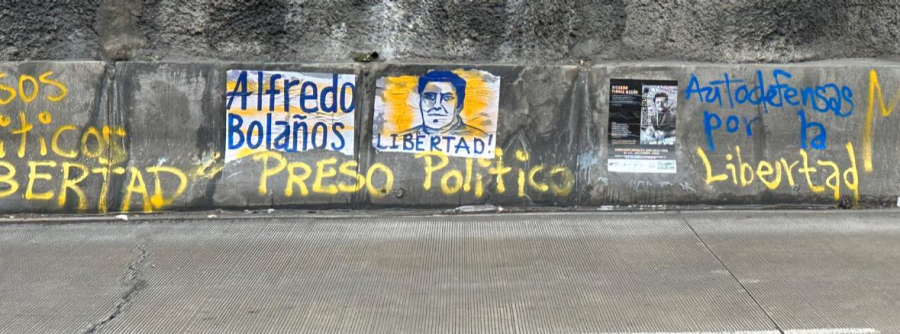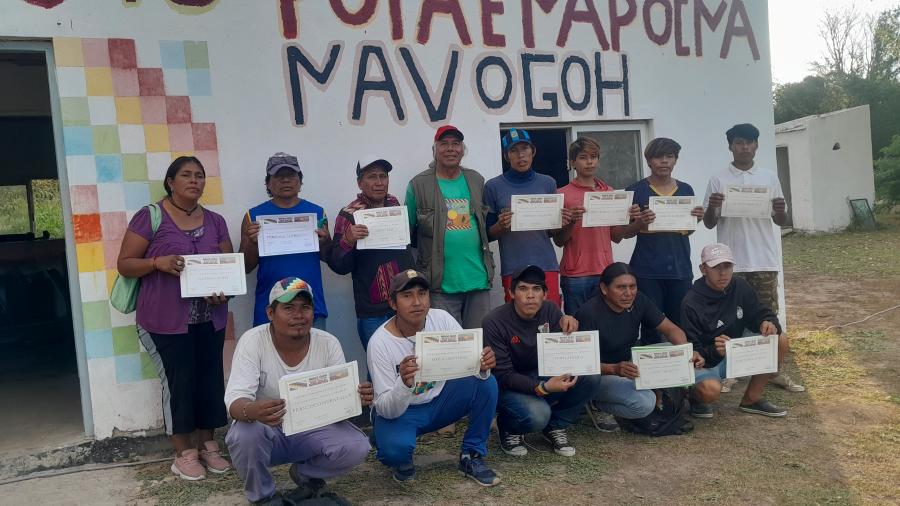Only two years ago a handful of women lit candles and hoisted glasses to initiate LA FOMMA, the first Indian women's cultural center in Chiapas, Mexico. What was considered a reckless act of defiance by many was yet one more step in the women's path toward artistic fulfillment and respect. Today, La Fortaleza de la Mujer Maya (The Empowerment of Maya Women) is a group of 25 women and 22 children learning to live creative lives in the hostile mestizo environment of San Cristobal de las Casas.
Their education in bilingual literacy is a mutually satisfying enterprise, enabling both mother and child to share the excitement of learning while maintaining their pride as Indians. They are families who have fled to the city from their remote villages under the duress of social, religious or military persecution. Regardless of the skills they may have mastered at home as midwives, weavers or potters, their experience has not prepared the women for urban survival any more than it has prepared their children for confronting the humiliating experience of the mestizo school, if indeed, they attend school at all.
The women attend classes in bilingual literacy, creative writing, radio broadcasting, health and nutrition. The daycare center in another part of the house minds the smallest of their children while their mothers attend morning classes. The older children attend an afternoon program designed to enrich their school experience.
Twenty women will celebrate their graduation ceremony in San Juan Chamula in June, attended by government officials from the state capital. Jacinto Alias, the founder of the Maya-Zoque Writer's Association, will present the women with certificates of achievement. The women will read their poetry and perform theatrical and choral performances commemorating their triumph.
Isabel Juarez Espinosa and Petrona de la Cruz Cruz have each written a play within the last year. Lacking the funds to hire male actors they committed yet another outrage by casting women in the male roles. Both these works will be performed in the United States this fall. A presentation at Barnard College will include a symposium on human rights. The performance in Cambridge, sponsored by Cultural Survival, will encompass human rights as well as focus on the struggle Mayan women are making simply to maintain their identity as Mayans, both for themselves and their children.
How did this all come about? It is a long story in which Cultural Survival continues to play a key role. In 1983 a group of Indian men founded the writers' cooperative, Sna Jtz'ibajom. Largely funded by Cultural Survival, they began recording history and folktales from their communities. As the cooperative grew, they sought additional members, and Isabel Juarez Espinosa was accepted into their group because of her high qualifications. The only female among eight men, she was ridiculed by both the mestizo and Indian communities. She persevered because she was eager to enhance her education. Within the next two years Sna Jtz'ibajom formed a puppet theater and a theatrical company, and Isabel participated enthusiastically in both despite the increasing ostracism she experienced in San Cristobal. The city was still not ready to accept an Indian woman having the audacity to appear on stage. More actresses were required, but Sna had difficult in persuading anyone to remain for more than a couple of rehearsals - until they found Petrona de la Cruz Cruz.
Isabel and Petrona were not only the first Indian actresses in Chiapas, they soon evolved into Mexico's first Indian women playwrights. Despite local outrage, they found recognition beyond the valley of San Cristobal in Tuxtla Gutierrez, Mexico City and eventually Canada, the United States, Belgium, and Australia. They began to recognize the powerful tool they had at hand to express their concerns as Indians and as women.
They parted company with Sna Jtz'ibajom in 1993. They had reached a fork in the road, a fork which may well converge eventually, but a fork, nonetheless. In the meantime Chiapas was erupting with social, economic and religious upheavals. Indian women and children were fleeing into San Cristobal by the thousands. The desperation of these displaced Indian women and children struck a chord with Isabel and Petrona due to their own personal histories. While both of them were born into turbulent families, they were used to the shelter an Indian community provides for its people. Mere children when they came to the city, they were disoriented and afraid. Determined to make their way, they realized they must learn to read and write. They soon discovered that even their hard-earned ability to read and write was not enough to free them from the tyranny of mestizo society. It was not until they learned to express themselves through artistic means that they found the liberation they yearned for. Watching their fellow Indians suffering in the shanties on the edge of town, their motto became, "If we can do it, so can you!" Flying on hope and a prayer, LA FOMMA was born. Article copyright Cultural Survival, Inc.



